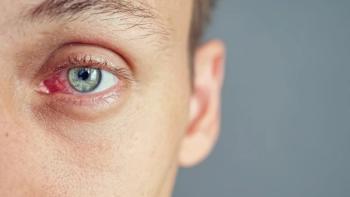
- December digital edition 2021
- Volume 13
- Issue 12
Dry eye treatments appear in unlikely places
The best dry eye instruments are often the doctor’s own ears
I have been fortunate to contribute to professional periodicals, mostly on the topics of dry eye and ocular surface disease. Happily, I have penned both peer-reviewed works and general interest content for trade magazines. It is a rewarding, educational journey consisting of compiling research and data for each piece of content and learning something new along the way that I get to share with readers.
I work with terrific editors and educators who curate my words, patch up grammatical errors, and document references in the correct manner. Without the expert work of these professionals, my run-on sentences would run amok. I am indebted to the publication staff who make me sound good and am grateful for our teamwork.
Sources of inspiration
I have been referred to as an “information parasite.” Not my favorite compliment, if it was meant to be a compliment, but it’s true. I admit that I scan search engines with a few favorite key words and am giddy whenever something piques my interest. Then I head down into the proverbial research rabbit hole to better understand and compare the information and apply it in my practice and clinical interests.
Frankly, I believe everything relates to dry eye and ocular surface disease in one way or another. Somewhere, a connection exists, just waiting for me to find it. Sleep patterns, vitamin deficiency, medications, work habits, work environments, old buildings, new carpets, recreational habits, personal habits, self-care habits, hydration, masks, breath, skin products and procedures, puppies, Play Station, and posture have all been linked to dry eye in my work.
Often, I will garner basic knowledge, assumptions, and opinions from colleagues on specific topics. I listen to webinars, read online literature updates, and peruse other medical specialty “hot topics.” Sometimes I am lucky enough to get an “inside scoop” on research topics or new practice patterns.
Unexpectedly, big surprises change our world, such as the pandemic, which changed the way we think about and go about doing the things that were our “everyday normal” in patient care. This is shared, collective information. Look to the patients Mostly however, topics I choose to explore come directly from the patients I examine.
The best dry eye “instruments” are our own 2 ears. Patients often reveal all the information a doctor of optometry needs to select the best track to recovery or, in the case of dry eye, approach homeostasis.
Nary a clinical day goes by that I do not consult, as my Mom would say, “the Google” for fast facts on some patient-reported thing that I was not familiar with. Many times, the patient alludes to the changes in their health or lifestyle that precipitated ocular symptoms. In the best doctor-patient interviews, the patient supplies their “cure” for a complaint.
Explore all options
I have researched drugs, procedures, syndromes, instruments, acupuncture, massage, foods and OTC products from around the world. I have also explored folk remedies and techniques, ayurvedic medicine, yoga postures, herbs, tonics, salves, solutions, tisanes, and various homeopathic recommendations as they may, or may not, be restorative to the ocular surface. I watch YouTube videos and read blogs as individuals grapple to find dry eye relief. If something, anything, was safe and effective for one patient, could it be so for another? Could the coconut and castor oils a patient receiving chemotherapy uses to soothe her dry eye be agents to help the ocular surface of another patient? Data suggest that yes, they may be.
Conclusion
Cyclosporin was isolated in 1971 from the fungus Tolypocladium inflatum and came into medical use in 1983. It is now on the World Health Organization Model List of Essential Medicines. Who knows what the next breakthrough for the ocular surface will be? But with open ears and minds, we stand a good chance of finding it.
Articles in this issue
almost 4 years ago
A chance to be the heroalmost 4 years ago
Careful evaluation of ophthalmic diagnostics in retinal casesalmost 4 years ago
Examining the essential role of the lymphatic system, at your disposalalmost 4 years ago
Viewpoints: Remote monitoring centers for dry AMDalmost 4 years ago
Five ways to stand out with specialty contact lensesalmost 4 years ago
Visualizing periphery is part of a comprehensive eye examalmost 4 years ago
Retinal findings present in pediatric casealmost 4 years ago
2021 American Academy of Optometry meeting recapalmost 4 years ago
Effects of pregnancy on keratoconusabout 4 years ago
Eye drops for presbyopia treatment receive FDA approvalNewsletter
Want more insights like this? Subscribe to Optometry Times and get clinical pearls and practice tips delivered straight to your inbox.



















































.png)


